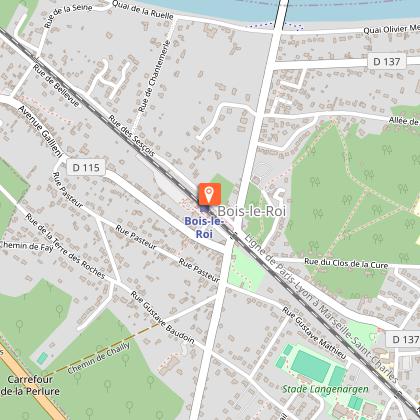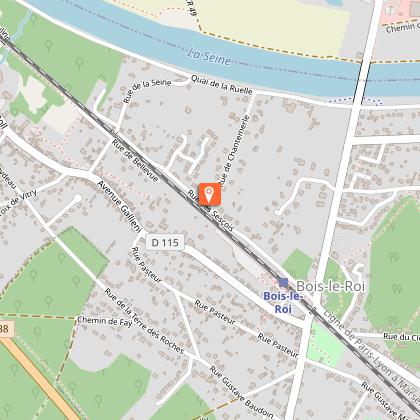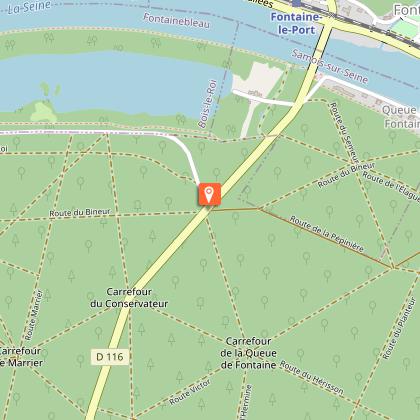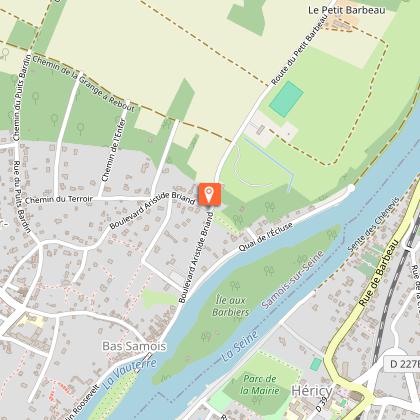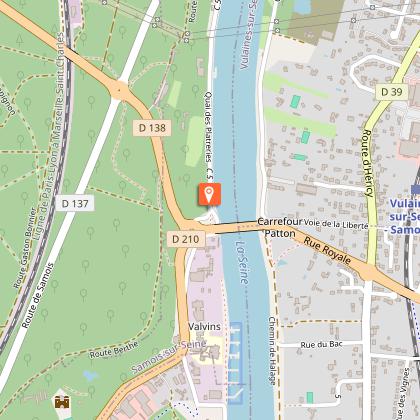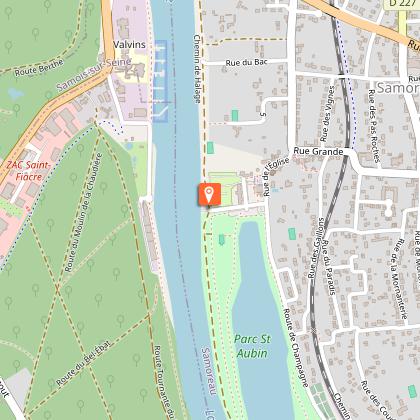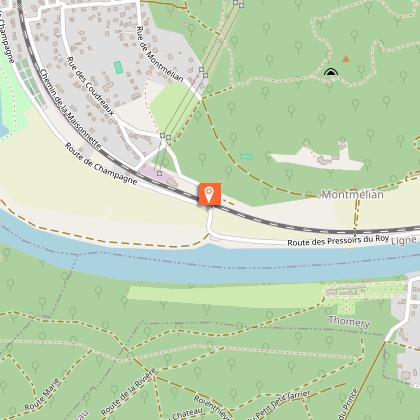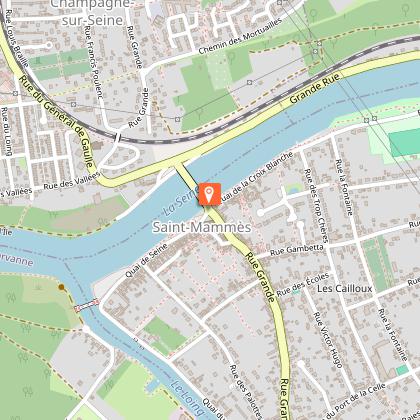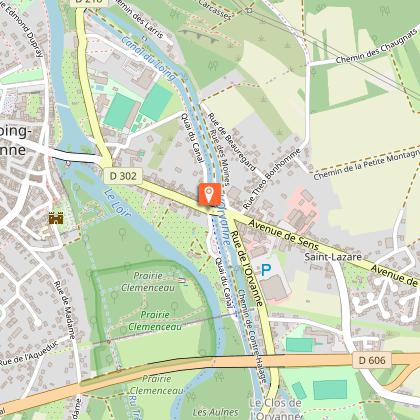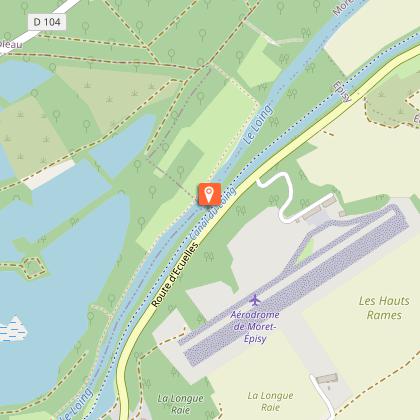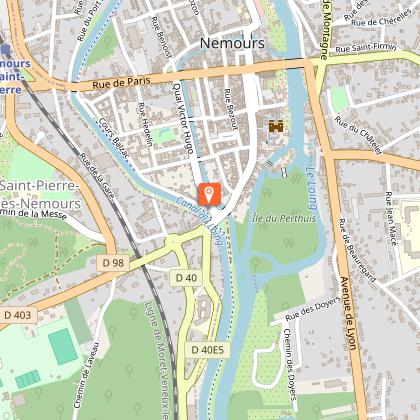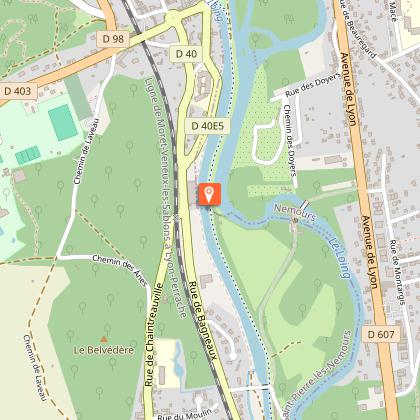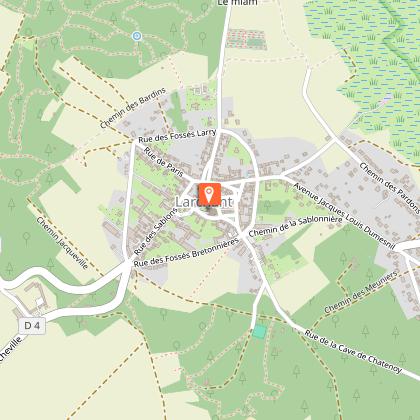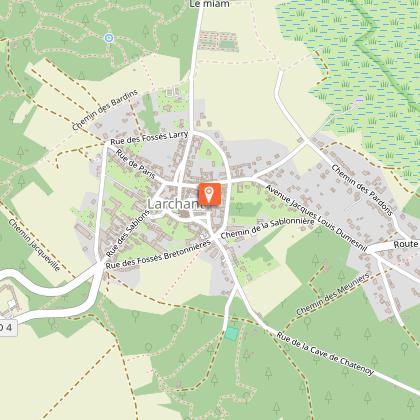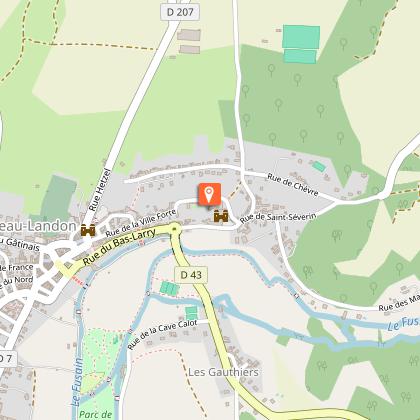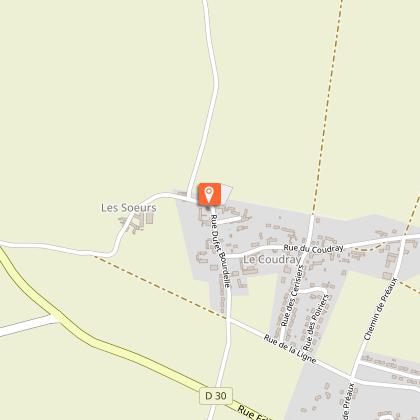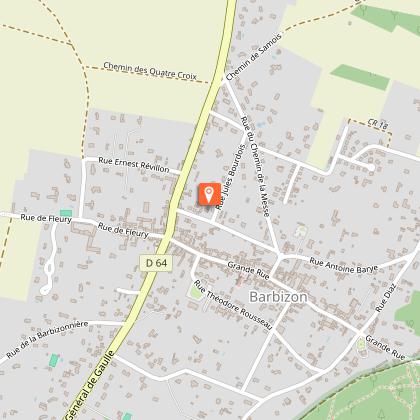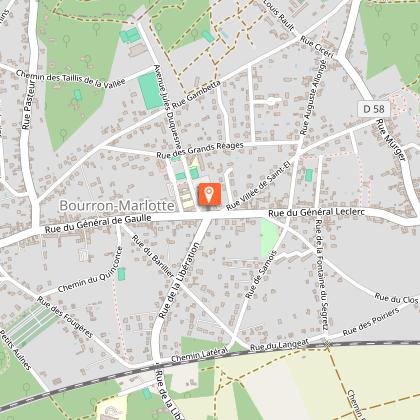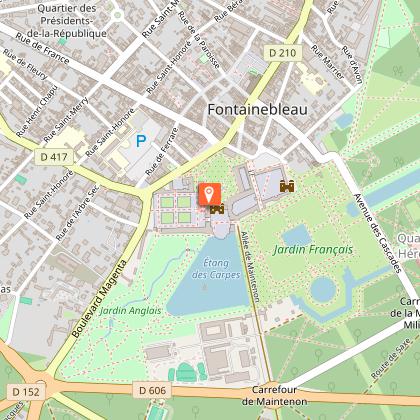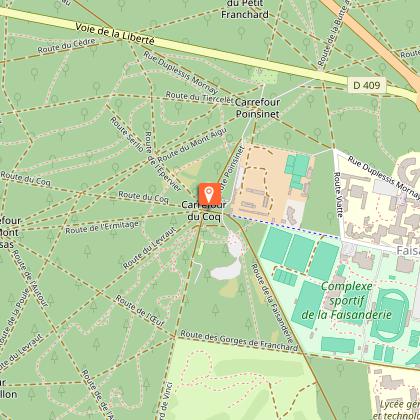Waarschuwing
Waarschuwingen
Type oefening
Wielren
Presentatie
Kaart
Stappen
Punten van interesse
Cirkwi's opdracht
Beoordelingen en recensies
Zie rondom
De Zuidelijke Scandibérique in Seine-et-Marne - van Bois-le-Roi naar Souppes-sur-Loing

Credit : Amelie Laurin
De Cirkwi brief
Ontdek de Scandibérique: Fietsen van Bois-le-Roi naar Souppes-sur-Loing
Maak een reis door de betoverende landschappen van zuid Seine-et-Marne met de Scandibérique route, een schat voorgesteld door Seine et Marne Attractivité. Deze 60 km lange fietsavontuur langs de rivieren de Seine en Loing biedt meer dan alleen lichamelijke inspanning; het is een poort naar de ziel van Frankrijk. Van de dichte, geclassificeerde bossen tot de bewaarde natuurlijke ruimtes, brengt elke pedaal je dichter bij het hart van de Franse geschiedenis en cultuur. Door dorpen boordevol karakter en landschappen bezaaid met historische bezienswaardigheden, gaat de ervaring verder dan alleen sightseeing. Voel de bries, geniet van de levendige sferen en word onderdeel van het levende tapijt dat deze regio is.
Korte technische beschrijving
Deze 54,9 km lange route heeft een maximale hoogte van 78 meter en een minimum van 41 meter. Fietsers moeten zich voorbereiden op een totaal positief hoogteverschil tussen 217 en 225 meter. Ondanks de relatief bescheiden hellingen kan dit glooiende terrein een matige uitdaging bieden, waardoor het perfect is voor gemiddelde fietsers. De reis van Bois-le-Roi naar Souppes-sur-Loing wordt gekenmerkt door een reeks technische kenmerken die de fietservaring verbeteren en zowel uithoudingsvermogen als strategie vereisen. Het biedt in wezen een evenwichtige mix van lichamelijke inspanning en schilderachtig genot.
Seizoensgebonden tips en veiligheid
Het aangaan van dit fietsavontuur vereist doordachte voorbereiding. In het voorjaar zijn de landschappen in bloei, maar kunnen de paden nat zijn; zorg ervoor dat je fiets is uitgerust voor modder. De zomer belooft weelderige uitzichten, maar hydratatie is essentieel in de zon. De herfst brengt een caleidoscoop van kleuren, maar gevallen bladeren kunnen glad zijn. Winter, hoewel somber, heeft zijn eigen schitterende schoonheid, maar ijzige omstandigheden vragen om voorzichtigheid. Draag altijd een helm, houd een reparatieset bij de hand en informeer iemand over je reisroute. Het volgen van deze aanbevelingen verbetert de veiligheid en het plezier, ongeacht het seizoen.
Historische parels van Seine-et-Marne
Het gebied van Seine-et-Marne is doordrenkt van een rijke geschiedenis en cultuur en fungeert zowel als bewaker als tentoonstelling van het erfgoed van Frankrijk. Van de uitnodigende deur van Bois-le-Roi tot Souppes-sur-Loing is deze route een levend museum onder de open lucht. Het loopt door gebieden die eeuwen geschiedenis hebben meegemaakt, van middeleeuwse veldslagen tot Renaissance artistieke bloeiperioden. De kastelen, kerken en musea langs de weg zijn geen gewone attracties, maar verhaalboeken uitgehouwen in steen, die je uitnodigen om de verhalen te ontdekken die deze fascinerende regio van Frankrijk hebben gevormd.
Weersinformatie voor een optimale ervaring
Het klimaat in Seine-et-Marne is overwegend oceaanisch, gekenmerkt door milde winters en aangename zomers, waardoor het het hele jaar door toegankelijk is om te fietsen. Voor de ideale ervaring is het raadzaam om je reis te plannen tussen het late voorjaar en het vroege najaar. Tijdens deze seizoenen is het weer het meest gunstig, met minimale neerslag en temperaturen die niet te heet of te koud zijn. Controleer altijd de weersvoorspelling voordat je op tour gaat, aangezien de weersomstandigheden kunnen fluctueren en mogelijk van invloed kunnen zijn op je fietservaring.
Maak een reis door de betoverende landschappen van zuid Seine-et-Marne met de Scandibérique route, een schat voorgesteld door Seine et Marne Attractivité. Deze 60 km lange fietsavontuur langs de rivieren de Seine en Loing biedt meer dan alleen lichamelijke inspanning; het is een poort naar de ziel van Frankrijk. Van de dichte, geclassificeerde bossen tot de bewaarde natuurlijke ruimtes, brengt elke pedaal je dichter bij het hart van de Franse geschiedenis en cultuur. Door dorpen boordevol karakter en landschappen bezaaid met historische bezienswaardigheden, gaat de ervaring verder dan alleen sightseeing. Voel de bries, geniet van de levendige sferen en word onderdeel van het levende tapijt dat deze regio is.
Korte technische beschrijving
Deze 54,9 km lange route heeft een maximale hoogte van 78 meter en een minimum van 41 meter. Fietsers moeten zich voorbereiden op een totaal positief hoogteverschil tussen 217 en 225 meter. Ondanks de relatief bescheiden hellingen kan dit glooiende terrein een matige uitdaging bieden, waardoor het perfect is voor gemiddelde fietsers. De reis van Bois-le-Roi naar Souppes-sur-Loing wordt gekenmerkt door een reeks technische kenmerken die de fietservaring verbeteren en zowel uithoudingsvermogen als strategie vereisen. Het biedt in wezen een evenwichtige mix van lichamelijke inspanning en schilderachtig genot.
Seizoensgebonden tips en veiligheid
Het aangaan van dit fietsavontuur vereist doordachte voorbereiding. In het voorjaar zijn de landschappen in bloei, maar kunnen de paden nat zijn; zorg ervoor dat je fiets is uitgerust voor modder. De zomer belooft weelderige uitzichten, maar hydratatie is essentieel in de zon. De herfst brengt een caleidoscoop van kleuren, maar gevallen bladeren kunnen glad zijn. Winter, hoewel somber, heeft zijn eigen schitterende schoonheid, maar ijzige omstandigheden vragen om voorzichtigheid. Draag altijd een helm, houd een reparatieset bij de hand en informeer iemand over je reisroute. Het volgen van deze aanbevelingen verbetert de veiligheid en het plezier, ongeacht het seizoen.
Historische parels van Seine-et-Marne
Het gebied van Seine-et-Marne is doordrenkt van een rijke geschiedenis en cultuur en fungeert zowel als bewaker als tentoonstelling van het erfgoed van Frankrijk. Van de uitnodigende deur van Bois-le-Roi tot Souppes-sur-Loing is deze route een levend museum onder de open lucht. Het loopt door gebieden die eeuwen geschiedenis hebben meegemaakt, van middeleeuwse veldslagen tot Renaissance artistieke bloeiperioden. De kastelen, kerken en musea langs de weg zijn geen gewone attracties, maar verhaalboeken uitgehouwen in steen, die je uitnodigen om de verhalen te ontdekken die deze fascinerende regio van Frankrijk hebben gevormd.
Weersinformatie voor een optimale ervaring
Het klimaat in Seine-et-Marne is overwegend oceaanisch, gekenmerkt door milde winters en aangename zomers, waardoor het het hele jaar door toegankelijk is om te fietsen. Voor de ideale ervaring is het raadzaam om je reis te plannen tussen het late voorjaar en het vroege najaar. Tijdens deze seizoenen is het weer het meest gunstig, met minimale neerslag en temperaturen die niet te heet of te koud zijn. Controleer altijd de weersvoorspelling voordat je op tour gaat, aangezien de weersomstandigheden kunnen fluctueren en mogelijk van invloed kunnen zijn op je fietservaring.
Automatisch gegenereerd.
IGN kaarten

2417OTR - FORÊT DE FONTAINEBLEAU RESISTANTE FORET DES TROIS PIGNONS
Uitgever : IGN
Verzameling : TOP 25 RÉSISTANTE
Ladder : 1:25 000
17.20€

2417OT - FORÊT DE FONTAINEBLEAU FORÊT DES TROIS PIGNONS
Uitgever : IGN
Verzameling : TOP 25 ET SÉRIE BLEUE
Ladder : 1:25 000
13.90€

2416SB - MELUN MORMANT
Uitgever : IGN
Verzameling : TOP 25 ET SÉRIE BLEUE
Ladder : 1:25 000
13.90€
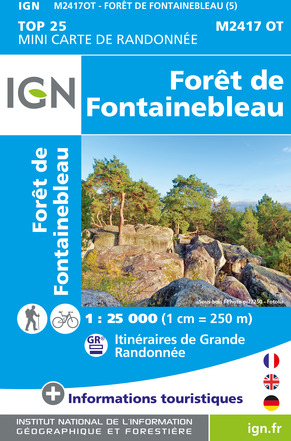
M2417OT - FORÊT DE FONTAINEBLEAU
Uitgever : IGN
Verzameling : MINI TOP 25
Ladder : 1:25 000
8.80€

190 PARIS CHANTILLY FONTAINEBLEAU
Uitgever : IGN
Verzameling : TOP 100
Ladder : 1:100 000
8.40€

118 PARIS CHARTRES PNR DE LA HAUTE VALLÉE DE CHEVREUSE
Uitgever : IGN
Verzameling : TOP 100
Ladder : 1:100 000
8.40€

119 PARIS SENS PNR DU GÂTINAIS FRANÇAIS
Uitgever : IGN
Verzameling : TOP 100
Ladder : 1:100 000
8.40€

D77 SEINE-ET-MARNE
Uitgever : IGN
Verzameling : CARTES DÉPARTEMENTALES IGN
Ladder : 1:150 000
5.90€

D75-95 ÎLE-DE-FRANCE OUEST
Uitgever : IGN
Verzameling : CARTES DÉPARTEMENTALES IGN
Ladder : 1:150 000
5.90€

NR08 CENTRE-VAL DE LOIRE
Uitgever : IGN
Verzameling : CARTES RÉGIONALES IGN
Ladder : 1:250 000
6.80€

NR03 ÍLE DE FRANCE
Uitgever : IGN
Verzameling : CARTES RÉGIONALES IGN
Ladder : 1:250 000
6.80€

NR04 - GRAND EST RECTO/VERSO ARDENNE CHAMPAGNE
Uitgever : IGN
Verzameling : CARTES RÉGIONALES IGN
Ladder : 1:250 000
6.80€
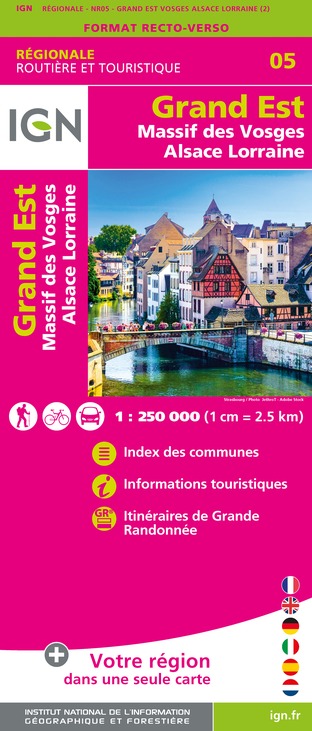
NR05 GRAND EST RECTO/VERSO MASSIF DES VOSGES ALSACE LORRAINE
Uitgever : IGN
Verzameling : CARTES RÉGIONALES IGN
Ladder : 1:250 000
6.80€
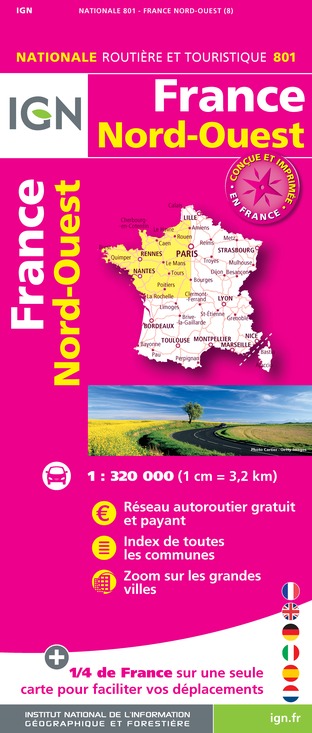
801 FRANCE NORD OUEST
Uitgever : IGN
Verzameling : CARTES NATIONALES IGN
Ladder : 1:320 000
6.10€

EUROPE
Uitgever : IGN
Verzameling : DÉCOUVERTE DES PAYS DU MONDE IGN
Ladder : 1:2 500 000
7.00€
Technische informatie
Wielren
Moeilijkheid
Niet gespecificeerd
Afstand
55 km
Type oefening
Wielren
Meer informatie tonen
Hoogteprofiel
Startpunt
77590
Bois-le-Roi
Lat : 48.474568Lng : 2.692292
Stappen
Punten van interesse
Gegevensauteur

voorgesteld door
Seine et Marne Attractivité
Quartier Henri IV - Place d'Armes 77300 Fontainebleau France
Beoordelingen en recensies
Om te zien rondom
